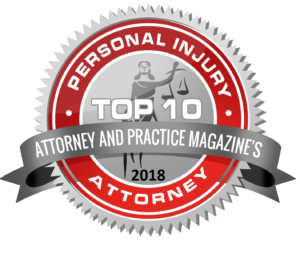When one sustains a burn injury, it’s not just the skin that suffers — the impact can extend to vital organs and nerve endings, causing both physical and emotional trauma. The severity of a burn injury is categorized into degrees, ranging from first to fourth degree, each indicating the extent of damage and potential risks involved.

How are burns classified?
Burn injuries are classified into four categories, with first degree burns being the least severe and fourth degree burns being the most critical, posing life-threatening risks as recognized by medical professionals.
First Degree Burns
These burns affect only the outer layer of the skin (epidermis), akin to minor sunburns. Symptoms include redness, pain upon touch, dry appearance, slight swelling, and tingling sensation. While often viewed as superficial, the risk of infection warrants medical attention, albeit usually requiring minimal intervention.
Second Degree Burns
When the layer beneath the epidermis, called the dermis, sustains damage, it results in second degree burns. These burns can cause redness, swelling, and blistering, with the potential for scarring upon healing. Common causes include scalding liquids, brief electrical contact, exposure to hot surfaces, and open flames. Healing typically takes two to three weeks, with minimal scarring.
Third Degree Burns
Characterized by deep red or white appearance without blisters, third degree burns extend through the epidermis and most of the dermis. While initial pain may be less due to nerve damage, recovery can entail intense discomfort. Treatment often involves tissue removal and skin grafts to facilitate healing. Causes overlap with those of second-degree burns.
Fourth Degree Burns
The most severe category, fourth degree burns penetrate through the epidermis and dermis to underlying muscle, nerve endings, and even bone. Initial pain may be mitigated by shock and the destruction of nerve endings, but the extent of damage can lead to long-term complications. Nerve endings, sweat glands, muscle tissue, and hair follicles may be affected, necessitating extensive medical intervention.
Addressing Burn Injuries with NovaLegalGroup, P.C.
When confronted with the aftermath of a burn injury, understanding the severity and potential ramifications is crucial. NovaLegalGroup, P.C. focuses in the complexities of burn injury cases, offering comprehensive legal support to ensure fair compensation and access to necessary resources for recovery.
Navigating Legal Proceedings
Burn injury cases may involve intricate legal proceedings, requiring experience in personal injury law and a thorough understanding of medical complexities. NovaLegalGroup, P.C. offers representation tailored to the unique circumstances of burn injury claims. From gathering evidence to negotiating settlements or litigating in court, our team is committed to securing the best possible outcome for our clients.
Compensation for Damages
In burn injury cases, compensation may extend beyond medical expenses to encompass various economic and non-economic damages. Economic damages may include medical bills, rehabilitation costs, lost wages, and property damage. Non-economic damages, such as pain and suffering, emotional distress, and loss of consortium, seek to address the intangible impact of burn injuries on quality of life. NovaLegalGroup, P.C. advocates for comprehensive compensation that reflects the full extent of our clients’ losses and suffering.
Successful Cases
Community Support and Resources
Navigating the aftermath of a burn injury can feel overwhelming, but individuals do not have to face it alone. Community organizations, support groups, and resources are available to provide assistance and encouragement throughout the recovery journey. From peer support networks to educational workshops and financial assistance programs, these resources offer valuable support to burn injury survivors and their families.
Raising Awareness and Prevention
Beyond individual support, raising awareness about burn injury prevention is crucial to reducing the incidence of such injuries. Community outreach initiatives, school programs, and public awareness campaigns can educate individuals about fire safety, first aid measures, and risk factors associated with burn injuries. By fostering a culture of prevention and preparedness, we can collectively work towards reducing the burden of burn injuries on society.
Advancements in Burn Care
The field of burn care continues to evolve, with ongoing research and technological advancements improving treatment outcomes and quality of life for burn injury survivors. Innovations in wound care, skin grafting techniques, and scar management offer new hope for individuals recovering from severe burns. Additionally, interdisciplinary approaches involving collaboration between medical professionals, psychologists, and rehabilitation specialists are enhancing holistic care for burn injury patients.
Related Videos
Choosing a Personal Injury Attorney
Personal Injury Case Timeline
Addressing Health Disparities
It’s essential to recognize and address health disparities that may impact access to burn care and support services. Vulnerable populations, including low-income communities, racial and ethnic minorities, and individuals with disabilities, may face barriers to timely and adequate treatment for burn injuries. Advocating for equitable access to healthcare resources and culturally sensitive support services is crucial in addressing these disparities and ensuring that all individuals receive the care they need.
Educational Initiatives
Education plays a pivotal role in preventing burn injuries and promoting prompt and appropriate responses in the event of an incident. Incorporating burn injury prevention and first aid training into school curricula, workplace safety protocols, and community outreach programs can empower individuals to take proactive measures to prevent burn injuries and respond effectively in emergencies.
Emergency Preparedness
Effective emergency preparedness is critical in minimizing the impact of burn injuries during disasters and emergencies. Developing comprehensive emergency response plans, training first responders in burn care protocols, and ensuring access to medical supplies and facilities are essential components of emergency preparedness efforts. By investing in preparedness measures and community resilience, we can mitigate the risk of burn injuries and enhance overall disaster response capabilities.
As advocates for burn injury survivors, NovaLegalGroup, P.C. remains committed to raising awareness, promoting prevention efforts, and providing compassionate support to individuals and families affected by burn injuries. Through our legal experience, community engagement, and commitment to justice, we strive to empower burn injury survivors to rebuild their lives with dignity, resilience, and hope.










